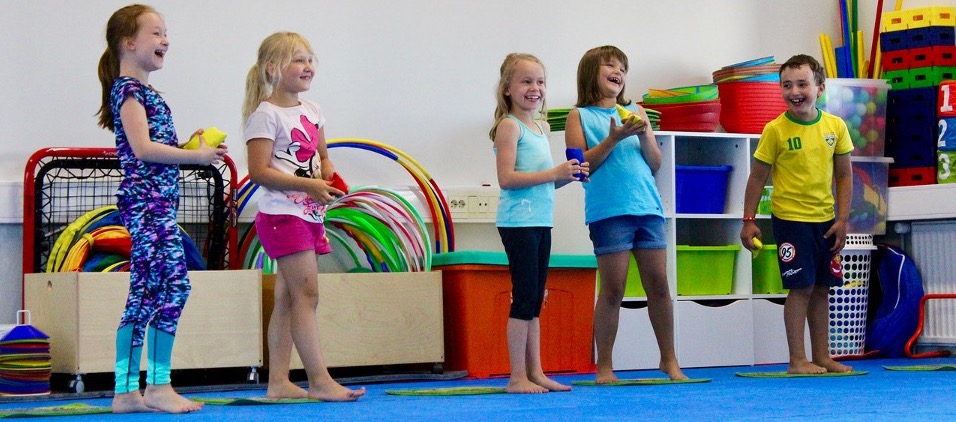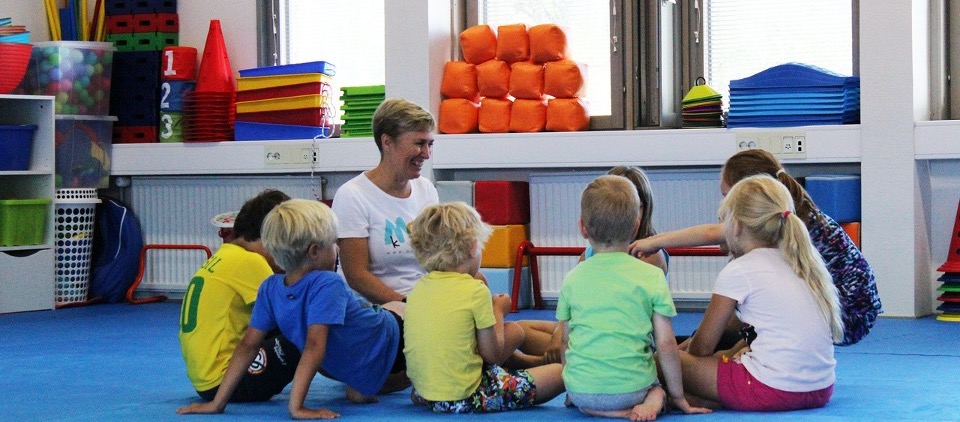Guest post from Kindiedays partner MoovKids
"Over the past few years, I have noticed a remarkable decline in the physical capabilities of the children who start classes with me. I am talking about their general body awareness, core strength, overall muscle tone, flexibility, and even the ability to follow verbal instructions about physical movement", says Darlene Koskinen the founder and CEO of MoovKids.

The challenge
The demanding workload and responsibility that teachers have to reach curriculum goals means that movement is not always considered a priority in early-years environments. It is not uncommon to find that children who have learning difficulties may also have poor body coordination. This is incredibly worrying, as it is through play and movement exploration that children become normal self-regulated people who are a joy to be with. Physical literacy should come first through regular movement and academic learning will naturally follow.
There is also increasing pressure on our children to learn to read and write before their brains and bodies are ready. Premature academic learning also affects their social and emotional well being, too. Sitting still for long periods is not natural for young children. Indeed, children learn best when they are having fun.
A new approach is needed
Intentional movement, especially in early childhood, is vital for cognitive development. Learning fundamental skills such as balance, axial stability, locomotion, and spatial awareness is directly correlated to the brain’s capacity for language development, pattern recognition, organisation, memory retention, and many other functions.
Motor-skill development creates the physical structure and neural plasticity in the brain to sequence patterns for academic learning. The vestibular system in the inner ear controls balance and spatial awareness. This corresponds to placing letters in the correct order to form words and to put words together to form sentences. Movement in specific patterns, such as in hopscotch, enhances the brain’s ability to internalise rhythms and for the eyes to track visual fields.

Children learn best when they have fun
I am trying to stress how important it is for children to learn and to practice “skill-focused” movement in the early years with an observant and encouraging teacher. This gives a solid foundation for physical and academic growth. It also allows for early detection of physical and cognitive problem areas that can be acted on and rectified before a child starts school and delves into more focused academic learning.
Implementing structured movement opportunities throughout the day takes a little planning and creative thinking, but it is the single most effective way to increase the physical ability and fitness of young children.
Here are a few strategies and ideas to help you add more physical activity to your days.
Daily movement ideas
☑ Write a list of animal movements that the children can do while walking in a line.
☑ Incorporate one stretching activity a day into your morning circle time.
☑ Introduce a daily balance challenge using different body parts.
☑ Get active outdoors with long rope skipping or ball games.
☑ Play Simple Simon Says: an excellent activity that is easy to do at any time.
☑ Play Musical Movement: moving while the music plays and a balance when it stops.
Planning
☑ Take stock of your equipment.
☑ Consider adding balls, beanbags, hoops, and ropes for each child.
☑ Consider changing the furniture around to provide more space for movement.
☑ Find some fun music tracks.
☑ Plan movement ideas for each day.
☑ Allow time for movement in your daily and weekly schedules.
Teaching
☑ Teach with energy and find ways to make even the simplest movement activity fun.
☑ Inspire your children to move well and move together with them.
☑ Encourage pretend play and creativity.
☑ Be observant. Challenge the coordinated and encourage those who are not.
☑ Use your voice to direct and inspire.
By the age of seven children should be physically prepared for learning more complex sports and hobbies as well as for academic learning. From my perspective and experience, many early-years childcare centres are not paying enough attention to physical development, without which, holistic development is not possible.

Add movement activities to "circle time"
Please commit to getting your children moving more and then watch them flourish as they become physically confident, coordinated, and strong. Here is a chart to give you a clear understanding of the basic fundamental movement skills and the activities that support them. Please consider whether your children are practicing activities that support each of these types of movements.
All children, no matter their age, love to move and need to move. It is up to the adults who share their days to inspire them to move often and with joy and confidence!
Get your Free MoovKids Sample with video and instructions HERE.
Keep the children moving!

Darlene Koskinen
Darlene Koskinen is the founder and CEO of the MoovKids online physical education program — a pedagogically aligned online curriculum for teaching purposeful, fun skill-based movement to young children. She presently runs a professional karate dojo in Finland and teaches both karate and recreational gymnastics to children of all ages and abilities.
She has 35 years of experience teaching physical education to early learners, including 13 years with special needs of all ages. Originally from Zimbabwe, Darlene now lives in Finland and has a passion for sharing her knowledge of skill-focused physical education with teachers and parents of early learners.
.png)